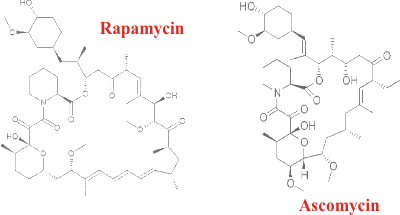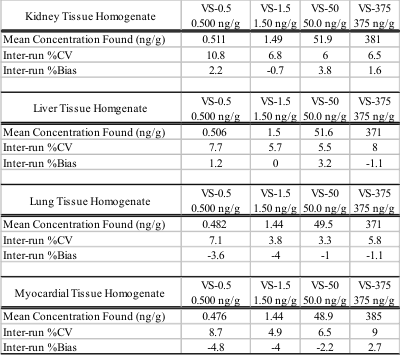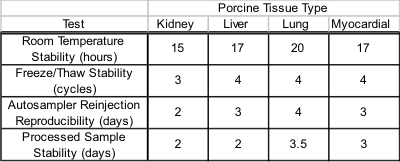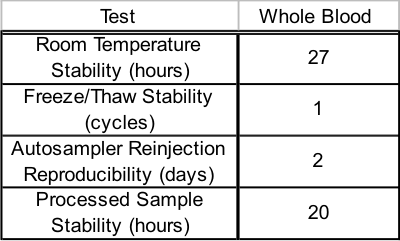Development And Validation Of An Lc-ms/ms Method For The Quantification Of Rapamycin In Porcine Whole Blood And Tissues
Zahuindanda M. DeForrest*, Scott D. McConkie, Peter J. Mann, and Melissa M. Kiser
BASi®, McMinnville, OR
Introduction
Rapamycin, also known as Sirolimus, was discovered in 1965, when it was isolated from a microorganism in soil. Since its discovery, it has demonstrated useful immunosuppressive properties, which have been utilized in preventing the rejection of organ transplants. Rapamycin is a mTOR inhibitor that has an advantage over calcineurin inhibitors, such as tacrolimus and cyclosporine, since it is not toxic to kidneys. Rapamycin has a molecular weight of 914 and has the molecular formula of C51H79NO13.
BASi® developed and validated an LC-MS/MS method for the quantification of rapamycin in porcine whole blood and tissues. The validation included the assessment of linearity, within-run and between-run precision and accuracy, specificity, freeze/thaw stability, short-term (room temperature) stability, the effect of dilution, and extraction efficiency. The method is suitable for analysis of samples over the range 0.1 - 100 ng/mL in porcine whole blood and 0.5 - 500 ng/mL in porcine myocardial, liver, lung, and kidney tissues.
Method
Analysis of rapamycin uses a unique combination of protein precipitation and column switching. A 0.1 mL aliquot of whole blood or tissue homogenate is extracted with a precipitating solution containing internal standard. After centrifugation, the supernatant is transferred to 96-well format. Column-switching is utilized by injecting samples onto a Zorbax SB-C18 cleanup column using methanol/formic acid/NaI before switching to an YMC ODS-AQ analytical column for the final gradient separation using acetonitrile/formic acid/NaI. Detection is by positive electrospray MS/MS.
Structures of Rapamycin and Internal Standard, Ascomycin

MS/MS
Mass spectrometric analysis was performed on a MicroMass Quattro Ultima triple quadrupole mass spectrometer using an electrospray interface. The MS was operated in positive ion mode. Detection was by multiple reaction monitoring (MRM) observing the following transitions:
Rapamycin 936 > 409 amu
Ascomycin (IS) 814 > 403 amu
Example Standard Curve

Porcine Tissues Validation Sample Results

Porcine Tissue StabilityResults

Example LLOQ Chromatogram, 0.5 ng/g

Example Low QC Chromatogram, 1.5 ng/g

Example Mid QC Chromatogram, 50 ng/g

ExampleHigh QC Chromatogram, 375 ng/g

Porcine Whole Blood Rapamycin Validation Sample Results

Example LLOQ Chromatogram, 0.1 ng/mL

Example Low QC Chromatogram, 0.3 ng/mL

Porcine Whole Blood Rapamycin Stability Results

Example Mid QC Chromatogram, 10 ng/mL

Example High QC Chromatogram, 75 ng/mL

Conclusions
A high throughput, unique, sensitive, and robust method was validated for the quantification of rapamycin in porcine whole blood and tissues according to FDA guidelines for linearity, precision, accuracy, specificity, and stability.
The range of the assay is 0.1 - 100 ng/mL in porcine whole blood and 0.5 - 500 ng/g in porcine kidney, liver, lung, and myocardial tissues.
No interference in the quantification of rapamycin was seen from six different lots of porcine blood and tissue. The method was not impacted by carryover of rapamycin or the internal standard, ascomycin, in the system. This method was used to quantify rapamycin in a GLP study to assay preclinical samples.
